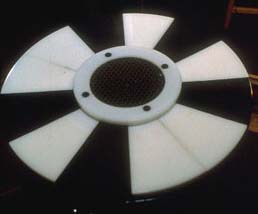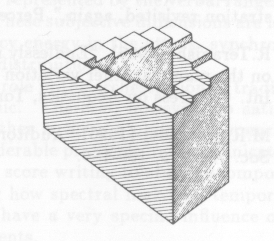Bet you can't find the highest note on this keyboard!

The Find the Highest Note Exhibit
Bet you can't find the highest note on this keyboard!

The Find the Highest Note Exhibit
Introduction
Use the keyboard in an Exploratorium on-line exhibit to find the
highest note.
Then use the exhibit to compare the pitches of two
notes.
You will learn that different people hear the pitches of notes
differently.
Material
A computer connected to the internet with Shockwave installed.
Assembly
Go to www.exploratorium.edu/exhibits/highest_note/ex.about.fr.html
select the "Discrete" link.
(This exhibit is also available in the Splo museum in Second Life.) http://slurl.com/secondlife/SploLand/153/45/26
To Do and Notice
After the shockwave program loads, move the cursor over one of the notes on the circular keyboard. You do not need to press a mouse button. A sound will be produced by the keyboard. Each key always produces the same sound.
Find the highest note.
What's Going On?

The "note" produced when you press a key is a actually a chord. When you play the "C" key, several C notes are played over 6 different octaves. Each of the component notes is played at a different volume - the notes in the middle octaves are the loudest. If you move around the keyboard clockwise from one key to the next, you and almost everyone else will hear a note that increases in pitch. Each of the 6 different notes which makes up the chord of this second key is slightly higher in frequency than the component tones of the C chord. As you move clockwise around the keyboard each note sounds higher than its neighbor.
When you go around one complete octave of 12 keys you return to the original chord. Each note sounded higher than the one before but you come back to the same place. This is an acoustical illusion.
If you go around the keys in the opposite direction, each note has a lower pitch than the one before until you arrive back at the starting note.
Part 2
The Tritone Paradox
To Do and Notice
Gather 8 people or so. Find a white key between two black keys. Play the white key and then the black key next to it, clockwise around the circle. Ask the people which is the higher pitch note, the white or the black. Notice that almost everyone says that the black key is the higher pitch.
Now, play the white key and the black key that is straight across the keyboard from the white key. (At the other end of a diameter of the keyboard circle.) Ask the people which is the higher note, the white or the black.
Some people will say that the white key is higher, others will disagree and say the black key is higher. A few will say that they cannot tell.
Next play the black key first, then the white key. Maybe a few people will change their answers.
Play around the circle of notes clockwise each note increases in pitch as you go. Then start again and go counterclockwise. Each note decreases in pitch. Both paths take you to the same note. Yet the same note may sound different depending on the path you took to reach it.
What's Going On?
The particular chords across the diameter of the circle of keys are separated by a a half of an octave, a tritone. One person will perceive one of these notes as being higher than the other, another person may perceive a different answer.
Click here to see the names of the notes played at this exhibit.
So What?
Human perception of pitch is complicated. The particular combination of tones in each chord has been chosen to produce a strong acoustic illusion. It is hypothesized that individuals will tend to evaluate the pitches of these notes based on the tonal range of their native dialect.
Etc.
These notes are known as a Shepard tones.
Exploratorium exhibit builder Jim Meador designed and built the
original museum exhibit. In his going away lecture at the
Exploratorium, Jim pointed out the importance of the names of
exhibits. He singled out "Find the Highest Note" as an exhibit with a
perfect name. The name can serve as the entire set of instructions
accompanying the exhibit.
|
Scientific Explorations with Paul Doherty |
|
22 May 2000- 31 May 2011 |